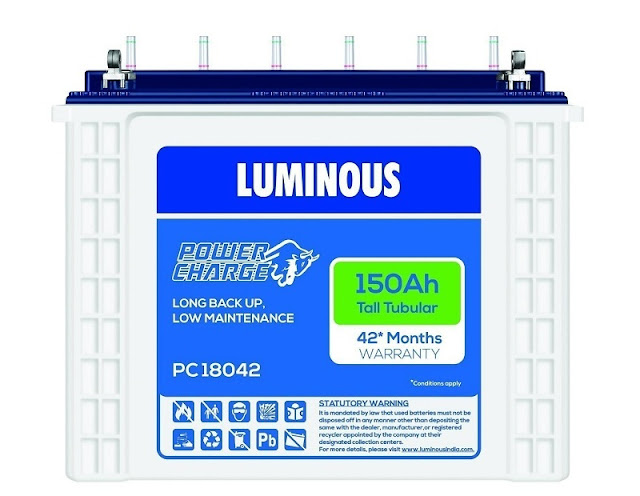How A Solar Panels Module Converts Solar Energy Into Electricity?
Solar Panels: A new study has revealed that there is every possibility of an entirely renewable energy future in the world as the solar devices are becoming more and more energy efficient day by day. According to a report, the use of solar energy has witnessed a growth of 43% since 2000.
It is obvious the solar power system devices have become much more efficient and smarter than the past. China installed more than 34 gigawatts of solar capacity in 2016. The country is currently leading the world as far as the harnessing of the solar energy & manufacturing of the energy efficient devices is concerned.
For a country like India, the challenge may be tougher than many other countries but the transition is definitely waiting for it in the wings. India is a very big country so it has plenty of solar resources and once it is able to harness them efficiently, the power demand in the country will reduce drastically.

The reverse process is called fission. It is the division of one atom into two. Every fission reaction in the sun releases tiny packets of energy called photons. The Photons cover a distance of 93 million before they enter into the panorama of the universe. It takes them8.5 hours to cover this distance.
Theoretically, enough photons strike our surface of the earth every hour to satisfy the global energy needs for an entire year. The emphasis is on how to trap, store and use solar energy for future needs of the humanity. Though some degree of success has been achieved by man to harness solar energy, a lot still needs to be done to ensure the most efficient use of this energy.
The best way to trap solar energy and convert it into electricity is the utilization of solar panel modules.
 |
| How A Solar Panels Module Converts Solar Energy Into Electricity? |
It is obvious the solar power system devices have become much more efficient and smarter than the past. China installed more than 34 gigawatts of solar capacity in 2016. The country is currently leading the world as far as the harnessing of the solar energy & manufacturing of the energy efficient devices is concerned.
For a country like India, the challenge may be tougher than many other countries but the transition is definitely waiting for it in the wings. India is a very big country so it has plenty of solar resources and once it is able to harness them efficiently, the power demand in the country will reduce drastically.
How Solar Energy Works?
The Sun that shines on the entire universe is actually a naturally occurring nuclear reactor in the core of which two types of reactions occur, fusion and fission. The fusion reaction describes the combination of two lighter elements into a larger one at very high temperatures and enormous gravitational pressures to form an atom of higher weight.
The reverse process is called fission. It is the division of one atom into two. Every fission reaction in the sun releases tiny packets of energy called photons. The Photons cover a distance of 93 million before they enter into the panorama of the universe. It takes them8.5 hours to cover this distance.
Theoretically, enough photons strike our surface of the earth every hour to satisfy the global energy needs for an entire year. The emphasis is on how to trap, store and use solar energy for future needs of the humanity. Though some degree of success has been achieved by man to harness solar energy, a lot still needs to be done to ensure the most efficient use of this energy.
The best way to trap solar energy and convert it into electricity is the utilization of solar panel modules.
What Is A Solar Panel module And How It Works?
The most efficient way to convert solar energy into electricity is to make the use of solar panels. The solar panels are touted as the most promising alternative energy source for decades. But a common question that sounds in most of the heads is how a solar panel converts sun energy into electricity. The mechanism is as given below:
Step1:
Produce electric current
- The mechanism is simple, the photons hit a solar panel cell, and the electrons are released from their atoms. The conductors are connected to negative and positive sides of a cell that brings the electrons into motion.
- When electrons come into motion, an electric current is formed. This way a circuit is completed and the electricity is produced.
Step 2:
Store This Energy
- The next phase is to store this energy for future use. That job is done by an efficient inverter battery system or a solar generator.
- The current produced is fed to the battery via a solar regulator to ensure the battery is charged properly and at the same time is safeguarded from the voltage and power surges.
- The strength of a solar panel is determined according to the power output it is able to give in watts in 1 Peak sun hour. Different locations receive a different number of peak sun hours per day. For example, In National Capital Delhi, the peak sun hours per day are 5.5.
Step3:
Converts DC Current into AC
- In the next phase, the emphasis is laid on how to convert this DC energy stored in the battery into Alternating current to power the household or office. The job is done with the help of a solar panel inverter.
- A Solar panel inverter with the help of a solar controller takes this energy from the battery and converts it into alternating current.
- The inverter is like a brain in your entire power backup system. In addition to converting current into AC power, it provides ground fault protection, controls current surge and voltage fluctuation.
- The solar inverters of today are smarter as they can be connected to Wi-Fi to know the system stats and track power consumption.
Factors Affecting the Efficiency of a Solar Panels
- The best way to harness the maximum solar energy from solar panel modules is to change its inclination. For winter months, it should be 15 degrees more than the latitude and in summer months 15 degree less than the latitude. You can do it very easily for small size solar panels.
- The solar panel modules can be wired in series and to increase its voltage in parallel.
- The temperature is one more factor that affects the efficiency of a solar panel. Panels are rated assuming temperature to be 25 degree Celsius. And with each 5-degree variation in temperature, the output can vary by 2.5%. The increase in the temperature decreases output.
- And if the solar panel module is cool due to cloud cover, and all of a sudden sun bursts through the cloud, the power output of the panel exceeds its normal value.
- On a cloudy day, when you see clouds hovering over your head, it is natural; the efficiency of the device will reduce. The location of the panel will impact its efficiency.
- A place which receives sunlight for a very short duration of the day will obviously be able to store less power. When more than one solar panel is tied up together to form a solar array, the more energy you can expect to generate.





Comments
Post a Comment